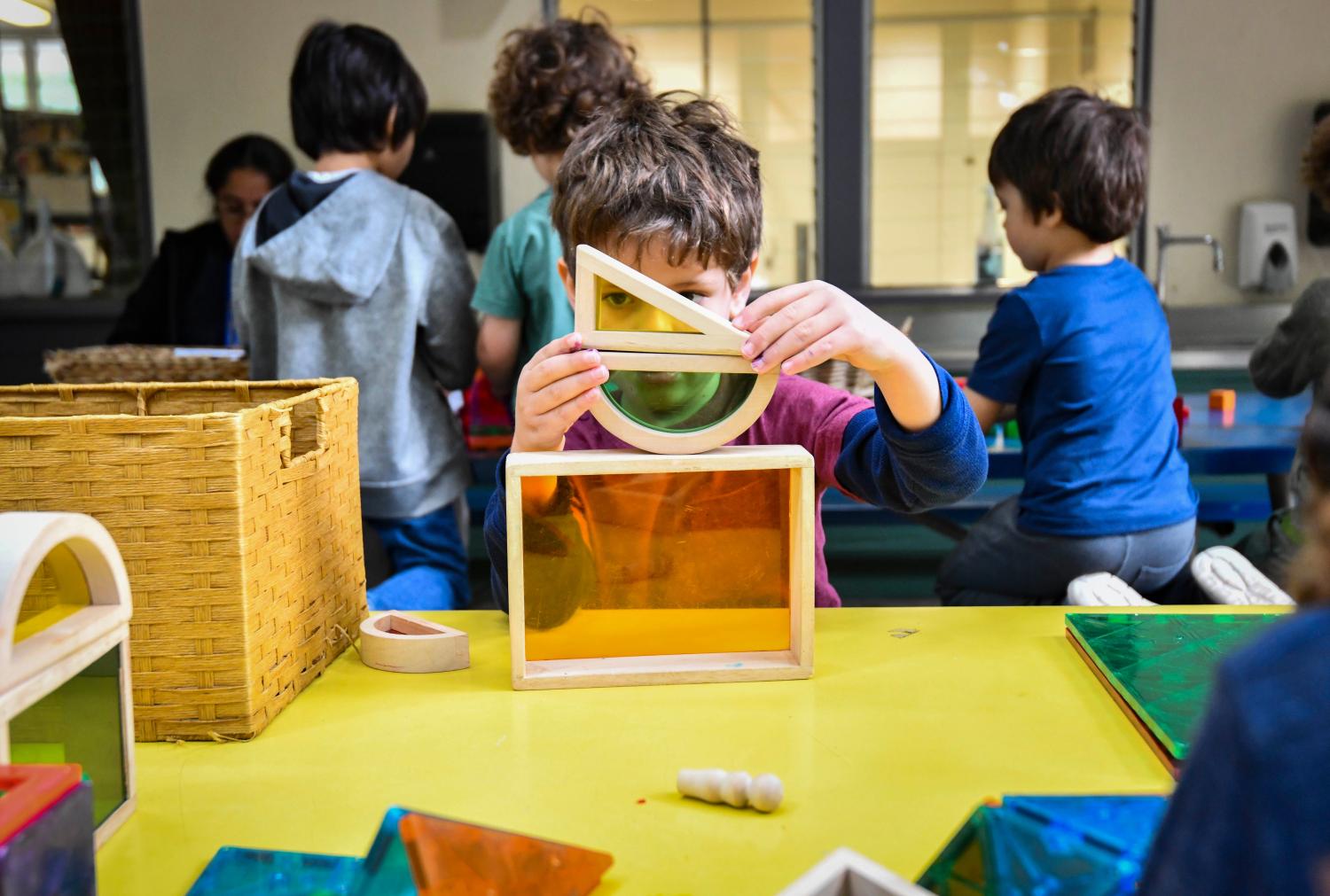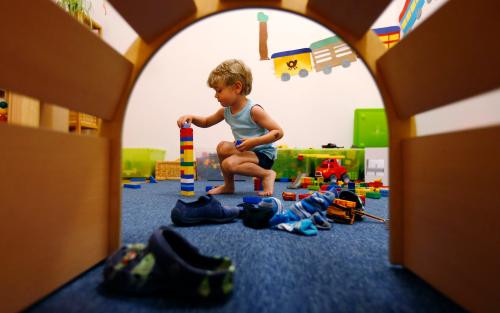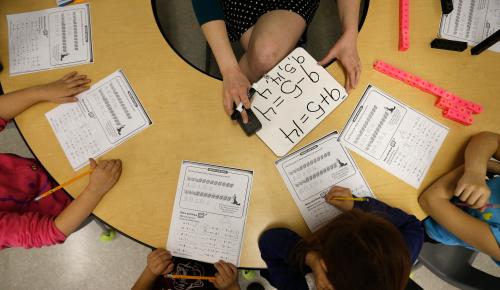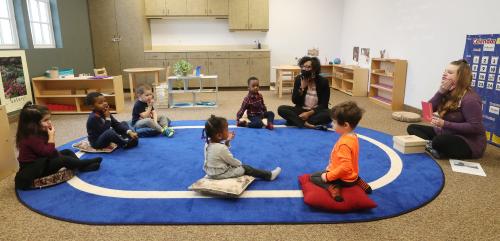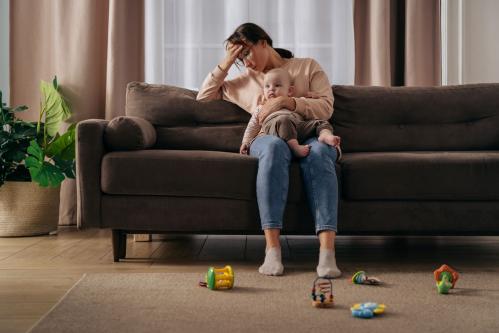High-quality early learning experiences—those filled with stimulating and supportive interactions between children and caregivers—can have long-lasting impacts for children, families, and society. Unfortunately, many families, particularly low-income families, struggle to find any affordable early childhood education (ECE) program, much less programs that offer engaging learning opportunities that are likely to foster long-term benefits. This post draws on our experiences in a longstanding research-policy partnership with the early childhood team at the Louisiana Department of Education (LDOE) to highlight how investments in careful, systemwide quality measurement can support quality improvement.
A challenge for families trying to find high-quality ECE and for policymakers trying to drive real improvement is that publicly funded ECE in the United States is offered through a complex hodgepodge of programs that includes federal Head Start, state preschool, and subsidized, private child care. These programs differ greatly with respect to their goals, funding levels, regulations, and, ultimately, the experiences they provide for young children.
Over the past two decades, public investment in ECE has grown substantially. While most investments have targeted expansions in access, there have also been efforts to raise quality through investments and more stringent regulations within specific ECE sectors, as well as initiatives to improve coordination and cohesion across sectors.
The scope of these efforts lends urgency to the question of whether the quality of ECE opportunities has actually improved over time. The data needed to answer this question at the federal, state, or local level, for the most part, do not exist. One reason is that the information ECE programs are required to collect tend to be poor proxies for the kind of quality that matters for children’s development. In licensed child care, for example, the available data typically only cover compliance with safety regulations which, while necessary, are insufficient for ensuring high-quality learning experiences. Another challenge is that, unlike K-12, where comparable data are collected across all publicly funded schools, early childhood data remain siloed across sectors—different data are collected on different timelines through different systems.
The absence of systemwide data makes it difficult to target resources wisely, and nearly impossible to assess whether large public investments in quality improvements are paying off.
Quality rating and improvement systems (QRIS)—accountability systems that measure ECE quality and provide supports for improvement—have recently emerged as a potential solution. Forty-four states now operate QRIS, and these systems could provide a way to track quality over time and across sectors. Unfortunately, most QRIS have not yet served this role. One reason is that participation in QRIS is often voluntary for programs, and therefore low.
In 2012, Louisiana passed Act 3, an ambitious law aiming to improve ECE quality statewide. In response, LDOE established a mandatory QRIS that included all publicly funded ECE programs (e.g., Head Start, state preschool, and subsidized, private child care). LDOE evaluates programs based only on the quality of teacher-child interactions, which the department measures using the Classroom Assessment Scoring System (CLASS), an observation tool that has been consistently, though modestly, linked to children’s development, including in pilot data from Louisiana’s QRIS.
Since 2015-16, LDOE has required at least two CLASS observations per year in every early childhood classroom serving toddlers and up, within every publicly funded program. They have also paid close attention to the validity of these observation measures in a number of ways, including by requiring additional “third-party” observations in half of all classrooms each year to ensure alignment.
Four years of these rich data (2015-16 through 2018-19) are now available, from more than 1,600 publicly funded programs. Our analyses suggest that the quality of teacher-child interactions in Louisiana has increased steadily during this period.
Figure 1 above highlights the considerable shift in CLASS scores over this period. In 2015-16, the statewide CLASS average was 4.70 on a scale from 1 to 7, and by 2018-19 it reached 5.13. Louisiana defines programs with scores above 4.5 as “Proficient,” and the percentage of programs that exceeded that threshold rose sharply from 62% to 85%. This is a notable change, potentially large enough to impact the learning of young children, and is driven by individual programs getting better over time.
The availability of data on all publicly funded programs in the state provides an opportunity—the first we have seen—to disaggregate consistent, statewide quality information by sector and the age of children served. Doing so suggests quality improved across all sectors, and in both classrooms serving toddlers and classrooms serving older children. Figure 2 below shows, for example, that in 2015-16, only 40% of child-care programs scored “Proficient,” compared to 61% of Head Starts and 88% of school-based settings. All three sectors improved over time, and although child care still lagged behind the other sectors in 2018-19, this “quality gap” relative to school-based settings was cut in half.
What might explain this improvement? QRIS data have become LDOE’s touchstone for ECE policy, informing LDOE’s strategic investments. For instance, LDOE identified programs with average CLASS scores under 3.75 as needing Early Childhood Site Improvement Planning, and offered curriculum assistance and mental-health consultation for teachers. They designed a set of School Readiness Tax Credits, which provide meaningful financial investments in programs achieving high-quality ratings. And they recently mandated that all lead teachers in child-care centers attain a credential that is tightly focused on improving teacher-child interactions.
Louisiana’s focus on a single measure of quality—one that has been shown to link to child outcomes and, importantly, one that early educators feel they can control—may have also contributed to this improvement. One critique of many QRIS is that they measure a complex set of measures that are not all relevant for children, and may be difficult for teachers to control. Louisiana piloted the policy slowly in order to cultivate stakeholder understanding of the measure, as well as buy-in. We recently surveyed all early educators working in publicly funded programs in two large Louisiana communities, and over 80% of early educators responded to our survey. Their responses indicate that, across all early childhood sectors, most leaders, teachers, and assistant teachers believe CLASS is a good measure, that interactions are a priority at their program, and that Louisiana’s focus on interactions is improving ECE.
Of course, Louisiana’s QRIS cannot solve the systemic issues facing ECE. There are long waitlists for child-care subsidies, and many children, especially infants and toddlers, cannot access affordable care. Despite the marked improvements in child care, more than a quarter of programs are not rated as “Proficient.” Finally, early childhood educators are struggling financially and emotionally, and turnover is high. Large, targeted financial investments are needed to address these serious issues.
Still, Louisiana’s recent ECE reforms highlight the power of systemwide data collection and the promising role of QRIS. By taking on this work, state leaders can build a common vision for improvement, an avenue and framework for investments, and a way to track progress as programs and communities work toward access to high-quality ECE for all.
Preston Magouirk contributed substantially to this post.


